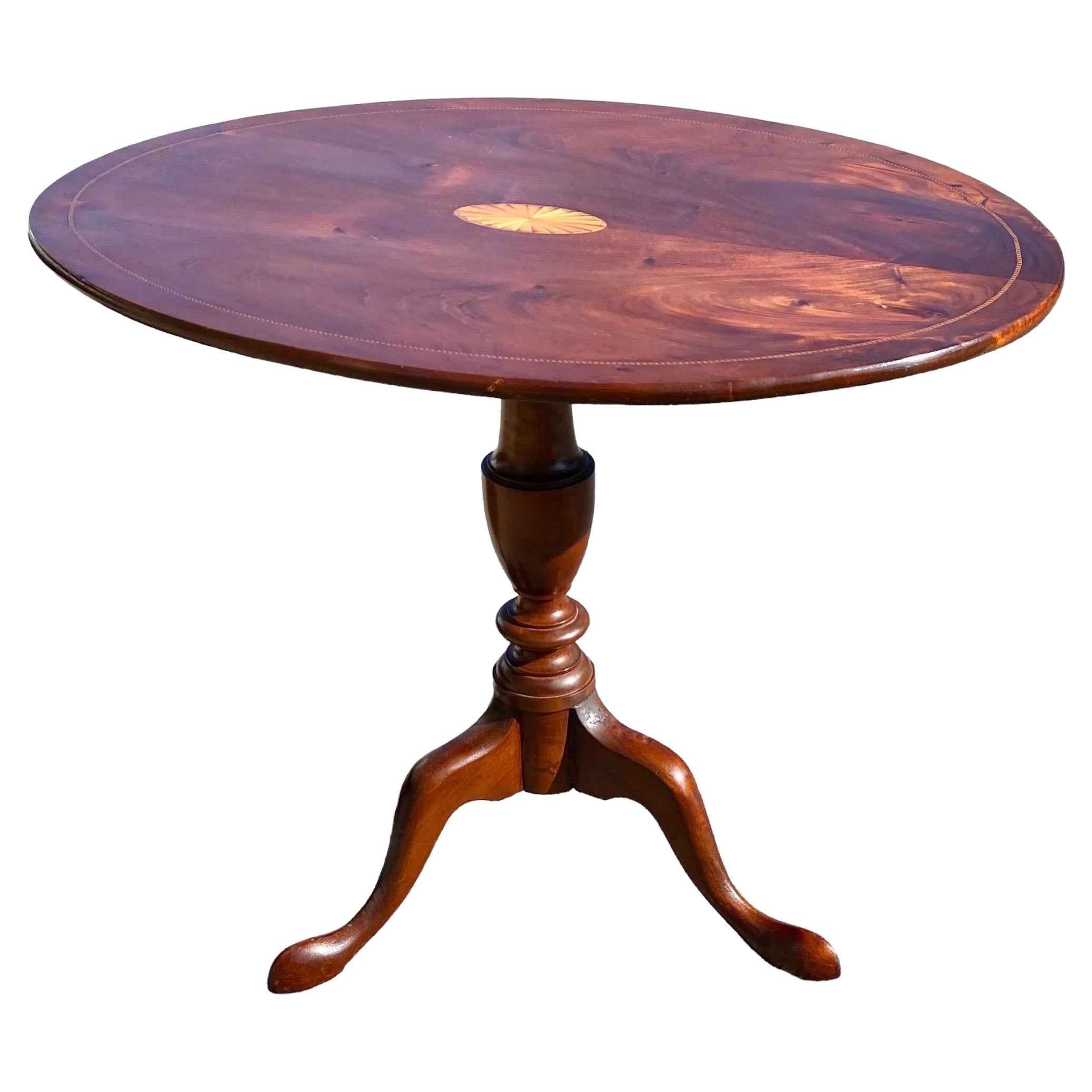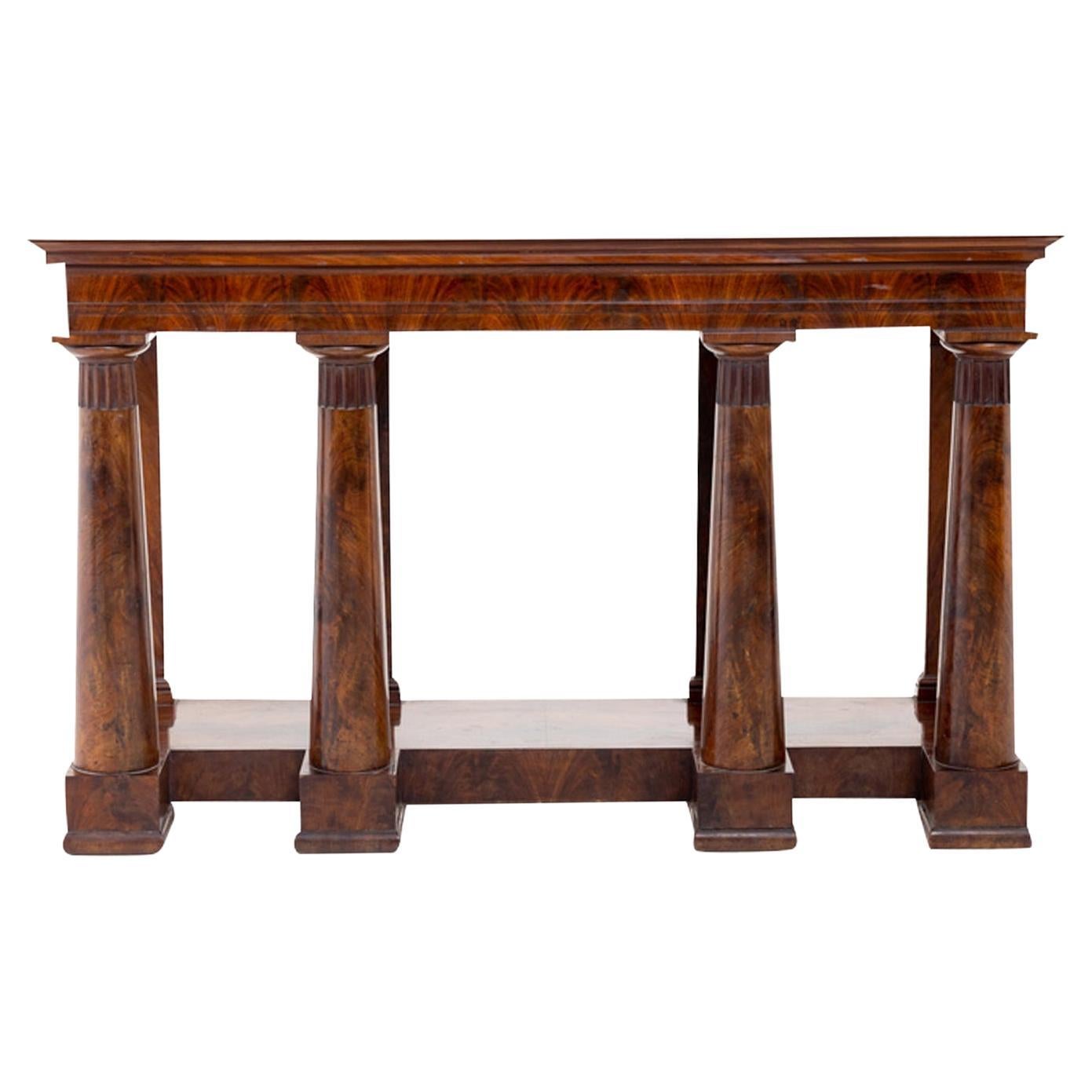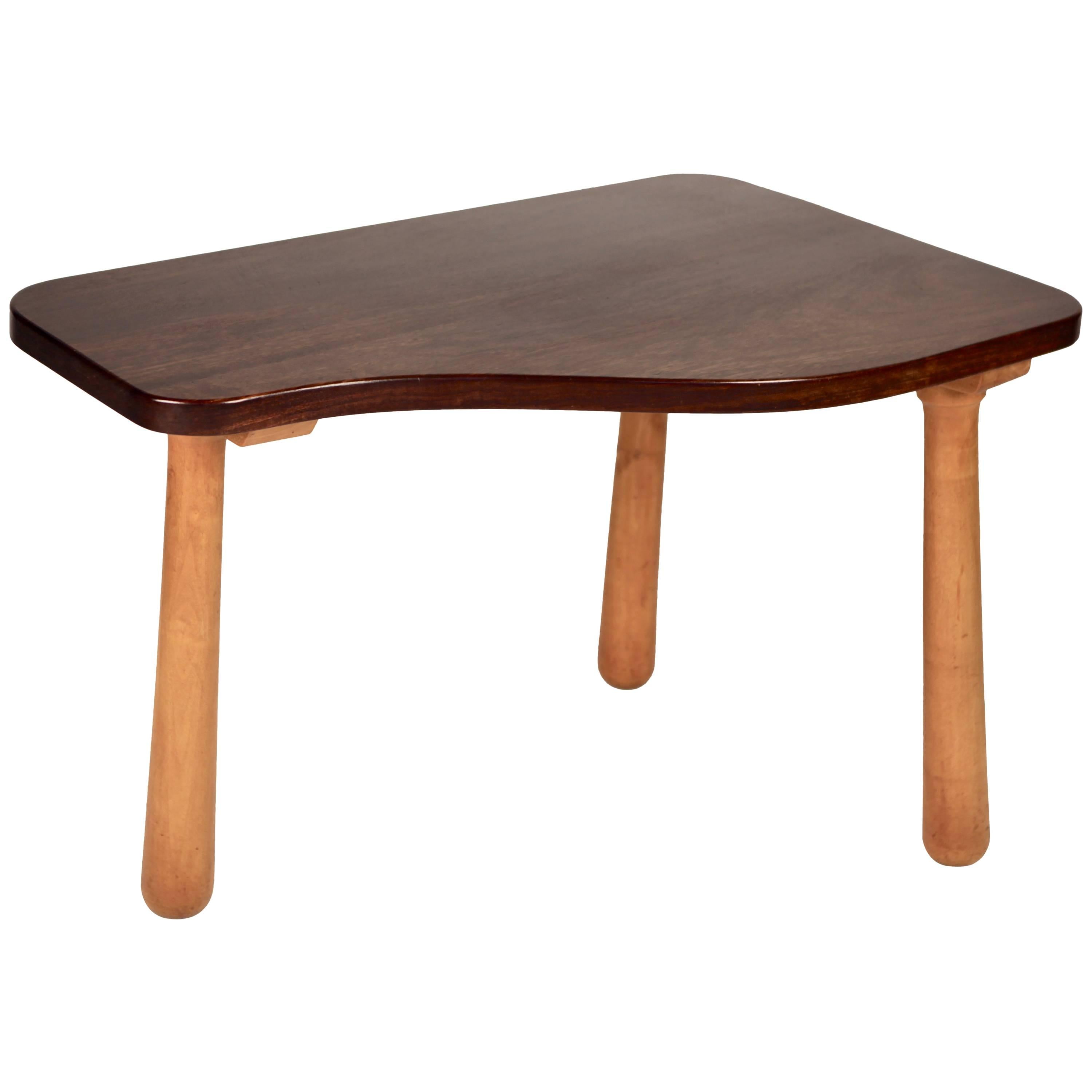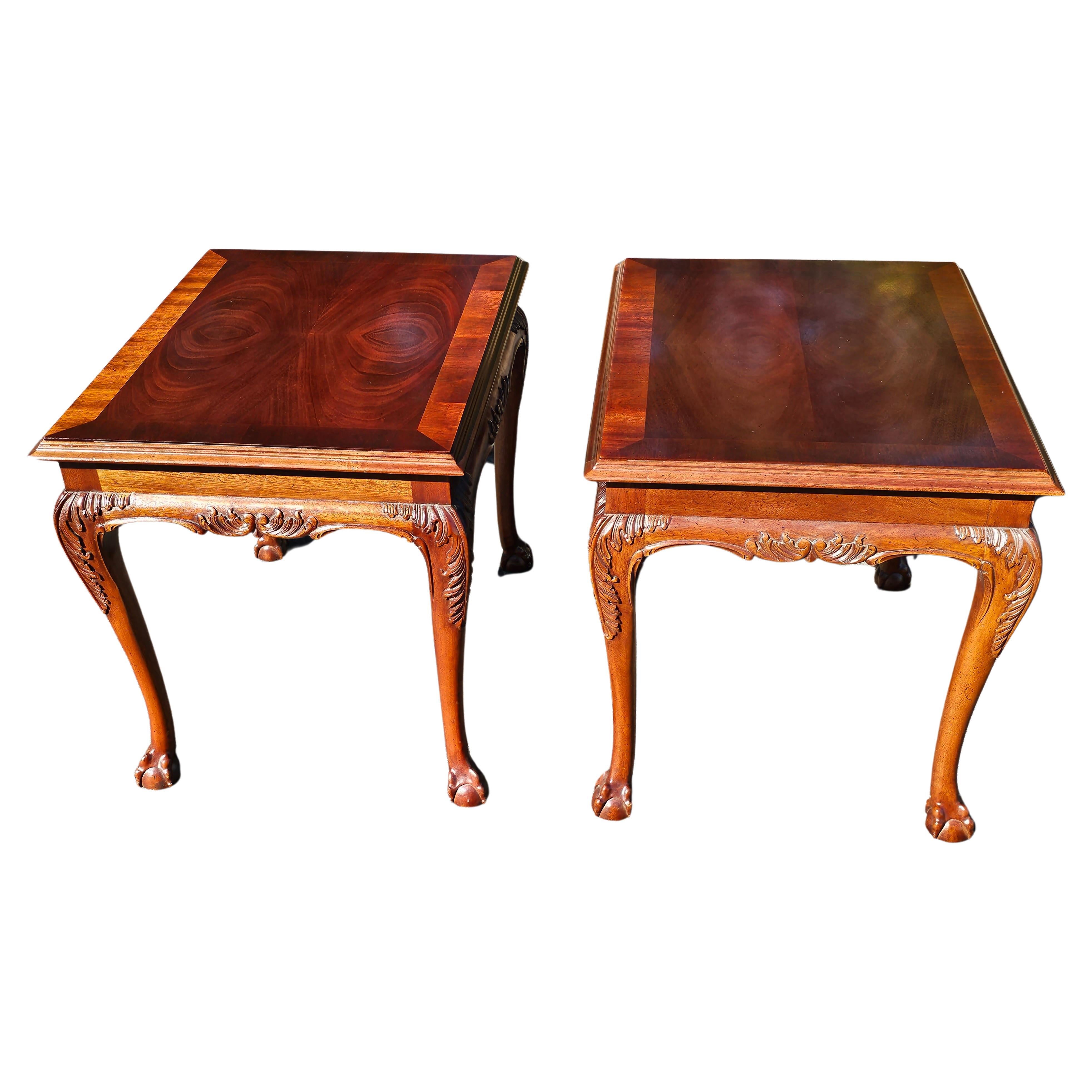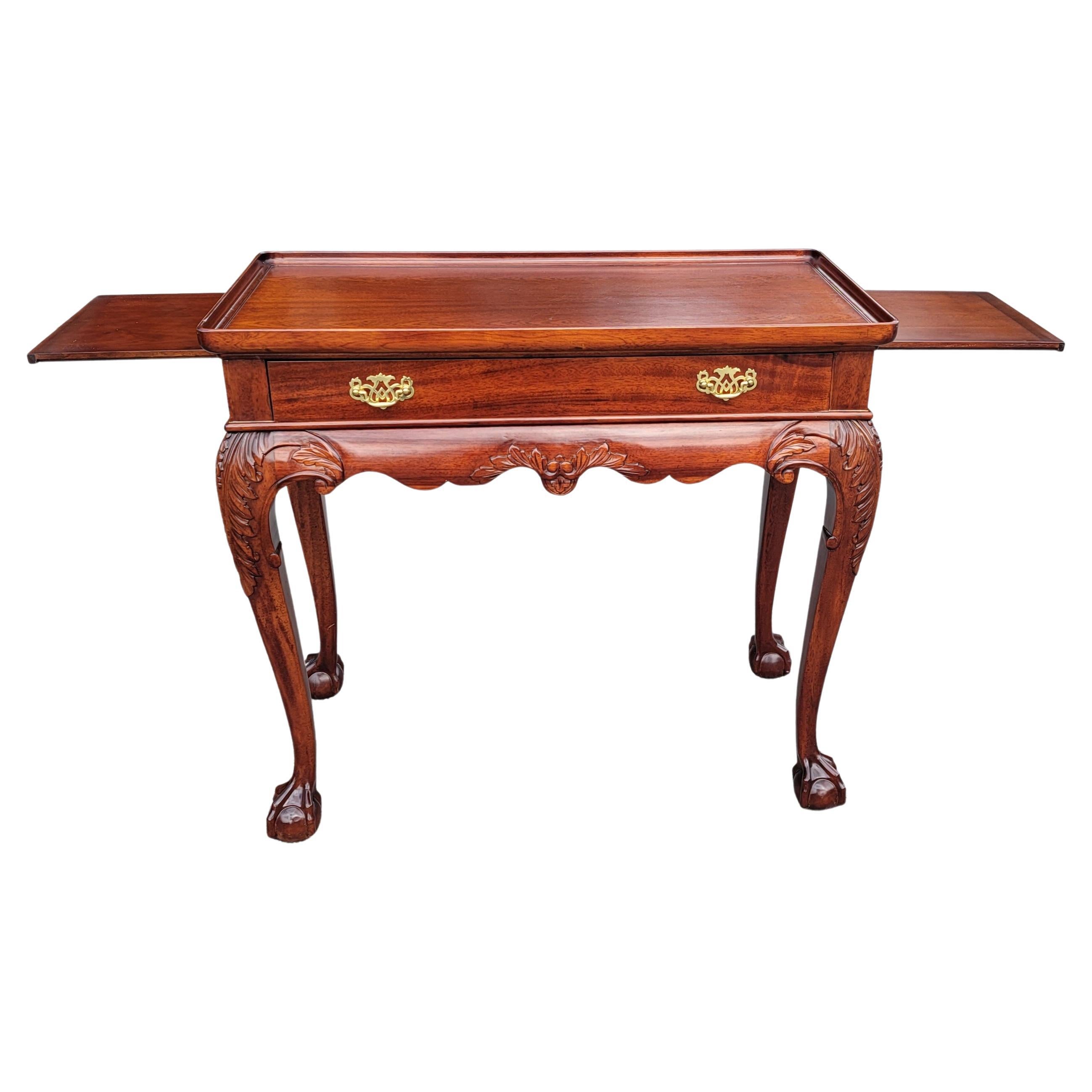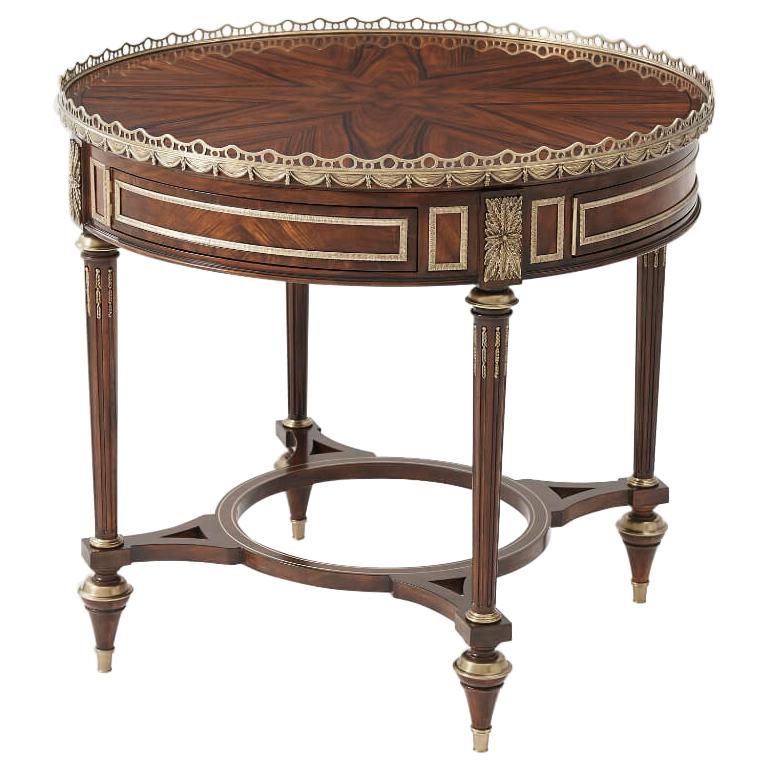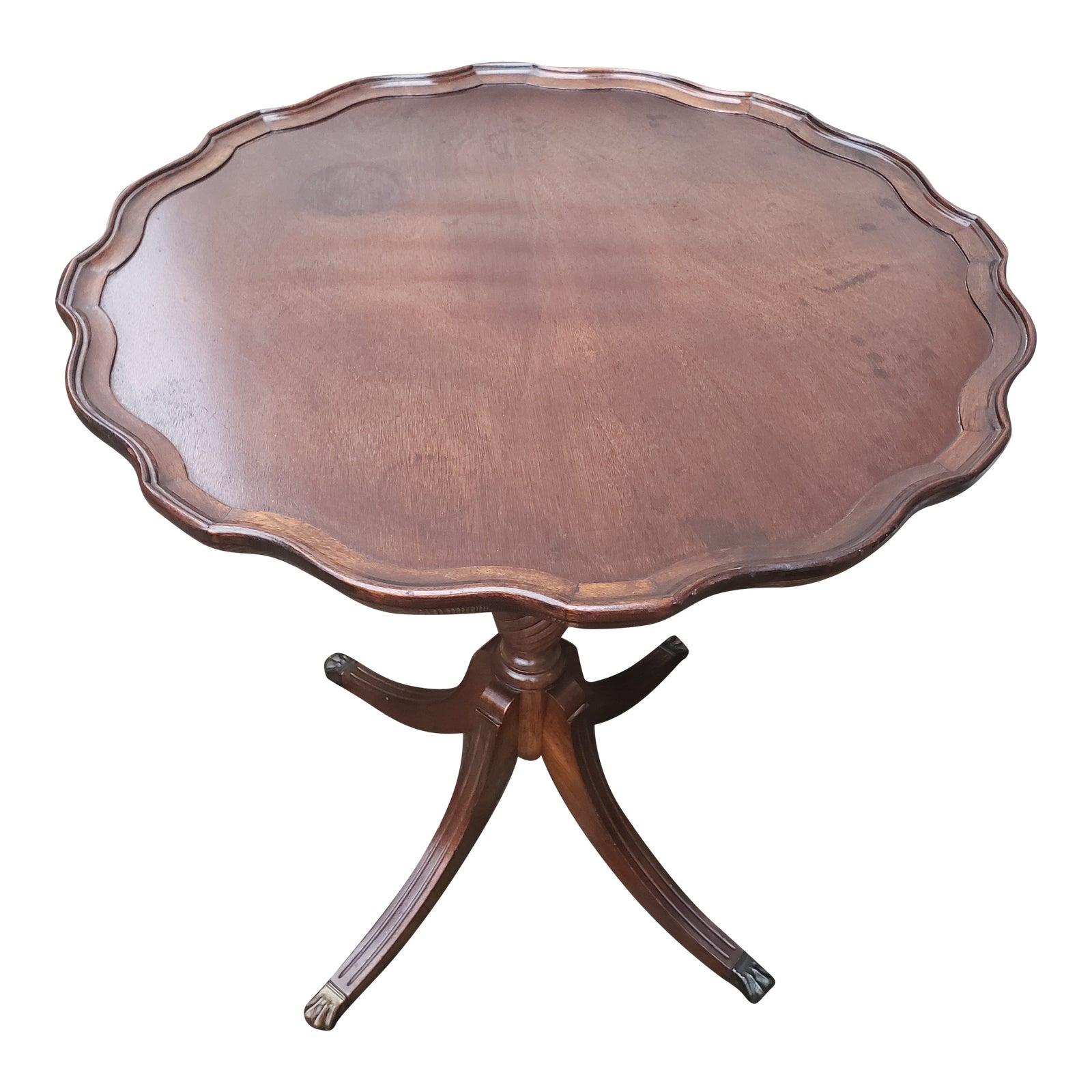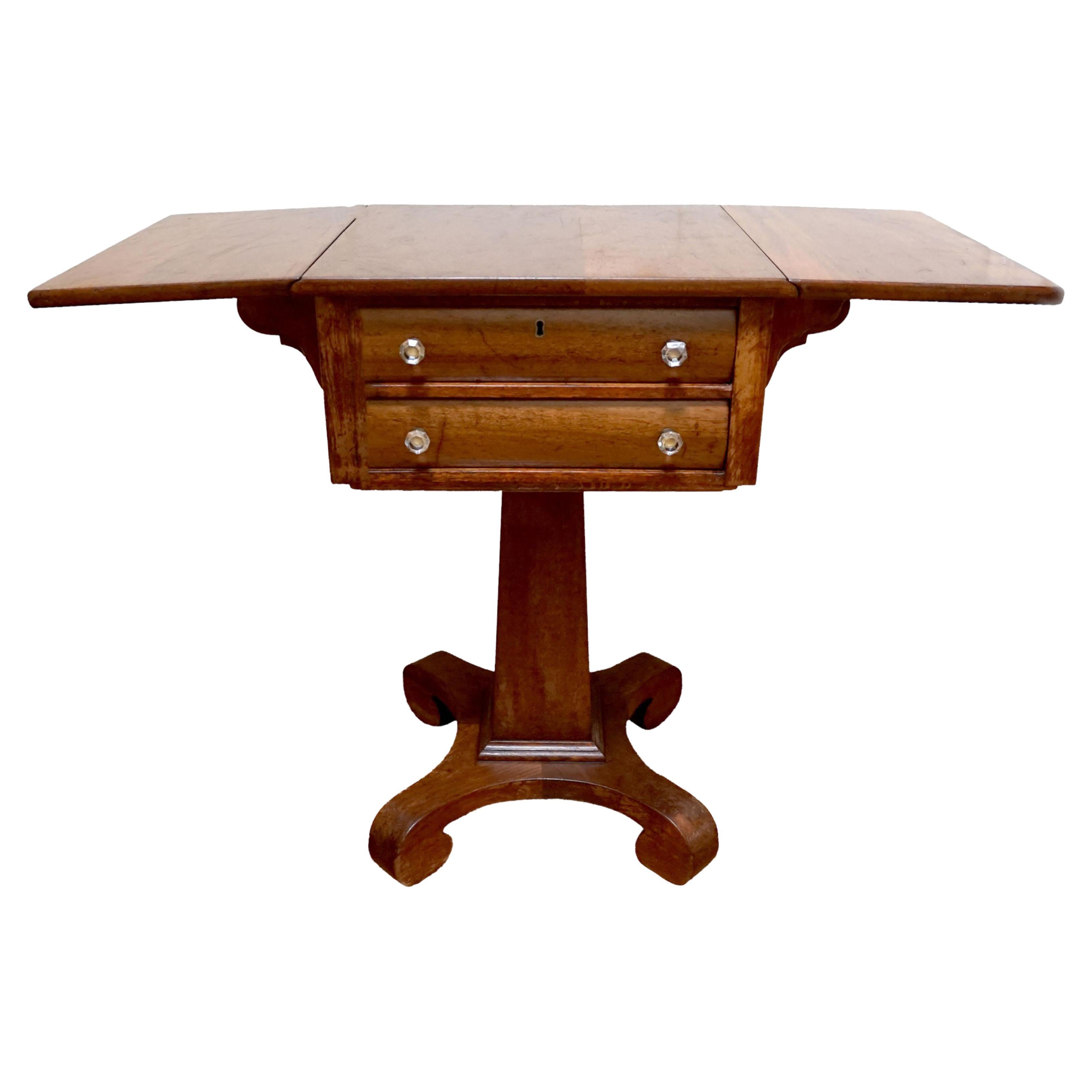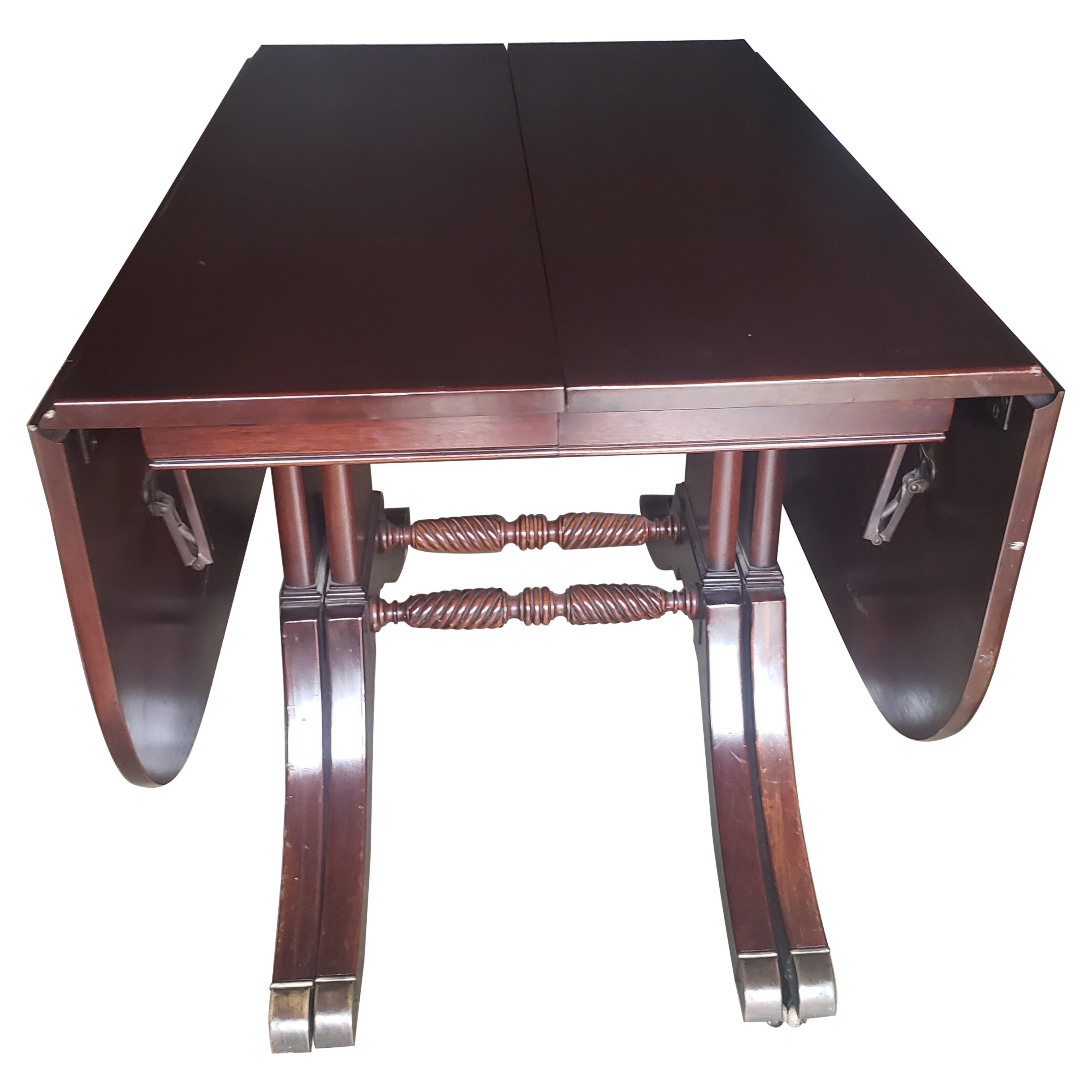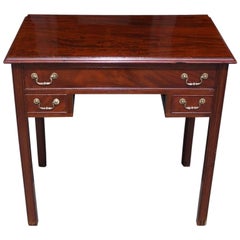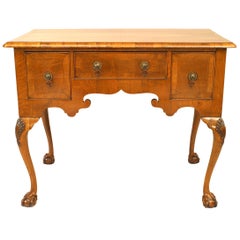
American Chippendale Style Mahogany Lowboy Table
View Similar Items
Want more images or videos?
Request additional images or videos from the seller
1 of 20
Auction endedBrowse Current Auctions
American Chippendale Style Mahogany Lowboy Table
About the Item
- Dimensions:Height: 31 in (78.74 cm)Width: 35 in (88.9 cm)Depth: 20.5 in (52.07 cm)
- Style:Chippendale (In the Style Of)
- Materials and Techniques:
- Place of Origin:
- Period:
- Date of Manufacture:1920
- Condition:Wear consistent with age and use. Near Mint.
- Seller Location:Dallas, TX
- Reference Number:1stDibs: LU3978113482212
About the Seller
4.9
Platinum Seller
These expertly vetted sellers are 1stDibs' most experienced sellers and are rated highest by our customers.
Established in 2015
1stDibs seller since 2018
349 sales on 1stDibs
More From This SellerView All
- 18 Century Country French Cherrywood Side Table or Open CaseLocated in Dallas, TXPresenting an extremely rare 18 century French Provincial (country French) cherrywood side table or open case. From circa 1790 and made of cherrywood, this beautifully proportioned side table or 3 shelf case is Classic and original French Provincial artistry. Constructed using wooden pegs giving a clear indication of it's authenticity. It stands on gorgeous solid cabriolet legs. Each shelf is has a molded and scalloped edge to reflect the top. A stunning early French Provincial piece!! This table has Impeccable Provenance: It was purchased by a Dallas Socialite from a French Antique...Category
Antique Late 18th Century French Country Side Tables
MaterialsCherry
- Chippendale Style Console Table with Hoof FeetLocated in Dallas, TXPRESENTING a GORGEOUS early 20th Century Chippendale Style Console Table with Hoof Feet, of neat proportions. From circa 1900-20, this...Category
Early 20th Century American Chinese Chippendale Console Tables
MaterialsMahogany
- 19C Set of 6 Irish Chippendale Style Ribbon Back Dining ChairsLocated in Dallas, TXPresenting a fabulous 19C set of 6 Irish Chippendale style ribbon back dining chairs. Irish made circa 1840-60. We know that these are Irish due to the signature ‘hairy paw’ feet which is synonymous with Irish Georgian furniture that were made in the Chippendale Style. These are hand crafted chairs, made of mahogany, and have fabulously detailed ‘Ribbon’ backs splats with tassel, acanthus floral and bow details. All 6 have been re-upholstered by us in a gorgeous tan/light gold silk damask fabric which is beautifully sympathetic to the style and period. We are confident that these are Early to Mid 19th Century chairs for a number of reasons: (1) The are hand crafted, (2) the color/patina is what you would expect with natural aging, (3) they have evidence of historic repairs, wear and tear consistent with age, (4) when we removed the old upholstery fabric, which looked like it was done in the 1980’s, we discovered the original ‘horse hair’ cushion filling … this practice stopped in the early 20th Century. The seat webbing was also much older and needed replacing. Fabulous acanthus carving on the knees of the front legs, with curved legs leading down to the fabulously carved hairy paws. Nice indented decoration on the front of the seat. The rear legs are undecorated and curve outwards for additional support and stability. Unsigned and unmarked but undoubtedly made by a top Irish furniture maker. probably in Dublin. Condition: Each chair has been newly re-upholstered and seat webbing replaced. The original horse hair cushion filling was cleaned and incorporated into the new cushion with modern foam to create a more comfortable and uniform seat cushion, but still retaining originality. Each chair has signs of historic repairs to the ribbon back splats over the generations. This is not unusual due to the somewhat delicate nature of these types of back splats. Also, it is an indicator of true age. The chair to the back left in the main photos has had the most repairs and much more recently performed (by us) as the back splaty was broken in 2 places (but we had the original pieces) and the chair needed the insertion of metal pins to secure the repaired sections. We have provided a couple of photos of this back splat which you can see evidence of the repairs. The repairs are very professionally done and the chair is now fully functionable and usable and the repairs are not very noticeable. These repairs are reflected in the pricing, as, if these chairs were ‘mint’ they would be very valuable and expensive ! Irish furniture can be recognised by certain features, which differentiate it from its European counterparts. The Irish style of furniture is said to have been lagging behind in fashion compared to English equivalent by a number of years, in both its design and manner by which the furniture was manufactured. A defining feature of the mid-eighteenth-century furniture is the carving on different parts of the furniture such as the aprons, blanket chests, bottle-stands and such objects. The carvings included foliated details, baskets of flowers and scallop shells, which are some of the most prominent carvings that are represented on Irish furniture at this time. A few of the Irish makers of these objects were James Hicks, Arthur Jones, William Moore, Mack & Gibton and Robert Strahan. All though individuals would have been the most prominent at the time of the 18th century and early 19th century but there are any other cabinet makers as well. Not all Irish furniture was detailed with such wonderful carvings and some might have been seen to be rather plain. One of the most identifiable items that are described as plain is the Irish Hunt Table, its simple elegance comprising of with straight plain legs. It was most commonly used in the dining room of a rural house such as a agents house or large house of a land holder. Another very popular and simply designed piece was the Irish Silver table, its design is very elegant and yet individual partially owing to the shell motive. Other examples of such Irish tables are side tables which have a distinctive double scrolled leg. Usually legs are carved with acanthus and have paw feet which are quite popular in Ireland but more rare in England. Other features are the inside leg which is carved with elongated C-scroll. The triple scroll on the leg was common place. Some cabinet makers and creativity was really captured with their side tables in how the carving was done. This carving may include Jupiters eagle or Lion mask and flanked Swags of flowers. In other furniture such as chairs, the H-shaped serpentine stretcher was popular in the 18th century in Ireland and when English chairs had moved forward in their design the Irish makers were still using the H-shaped serpentine. There was certainly an overlap between Irish and English furniture, one can see that Irish cabinet makers used English pattern books but used Irish features such as the carvings as the shell, baskets of flowers and foliated details. Another unique feature in Irish cabinet making was Killarney ware...Category
Antique Mid-19th Century Irish Chippendale Dining Room Chairs
MaterialsMahogany
- American Chinese Chippendale Tripod Tilt Top Table - Co. of Master CraftsmenBy Company of Master CraftsmenLocated in Dallas, TXPRESENTING a LOVELY Early 20th century American piece, made circa 1930. Chinese Chippendale Style Tilt-top tripod table with frieze Gallery. Made of solid dark mahogany. Great condition! Manufactured by the 'Company of Master Craftsmen' and is correctly stamped in the base of the tilt-top, with an eagle crest. and the serial numbers 'D16389' and 'J1524'. Would have been retailed by W.& J. Sloane in New York City. Provenance: Bought from a reputable Dealer in Ireland. Dimensions: Top Down: 28.5 in High with diameter of top being 23 in Top Up: 39 in High THE Company of Master Craftsmen: The Company of Master Craftsmen was founded in 1925 as a subsidiary of W. & J. Sloane. W. & J. Sloane, based in New York City, was one of the oldest and most established furniture makers and retailers in the U.S. It had a history of furnishing many of the finest homes in the country including the Breakers and the White House. William Sloane Coffin Sr., who was President of the Metropolitan Museum of Art in New York and an executive with the Sloane Company, founded the Company of Master Craftsmen to make colonial style furniture. The company worked closely with the Metropolitan Museum’s American wing, reproducing rare pieces from the collection to decorate the homes and offices of many of New York’s and the country’s elite. The Company’s production was quite limited during its’ thirty years in business making their pieces quite rare and very collectible. Today, a number of museums including the Metropolitan Museum in New York and the M.F.A. in Boston have Company of Master Craftsmen pieces in their permanent collections as examples of Fine “revival” furniture. W. & J. Sloane: The company was founded as a rug importer and seller on March 2, 1843, by William Sloane who had just emigrated from Kilmarnock, Scotland, a town famous for weaving Fine carpets and rugs. In 1852 his younger brother John W. Sloane joined the firm, when it was renamed W. & J. Sloane. It was the first company to import oriental carpets into the United States. It soon expanded to include furniture and other home furnishings, and quickly became the choice of the elite in New York. In the late 19th century the company added an antiques department, started producing furniture, and became the first home furnishings store in the country, Billing itself as "W. & J. Sloane Interior Decorators and Home Furnishers." Its flagship store was originally located at Broadway and 19th Street, in "Ladies' Mile", relocating later to 414 Fifth Avenue at 38th Street, former flagship of Franklin Simon & Co. In 1891, W. & J. Sloane incorporated and set the national decorating taste of the United States, and over the next sixty years decorated the homes of the most prominent people in the country, including the Breakers and the White House, created Hollywood movie sets, and even designed and decorated interiors of automobiles. It opened a branch in San Francisco, California originally to furnish pavilions at the 1915 Panama-Pacific Exposition (it also furnished the model homes at the 1939 New York World's Fair). It later acquired other upscale firms such as the California Furniture Company, and in 1925 a subsidiary, the Company of Master Craftsmen was founded by William Sloane Coffin, Sr. (the father of Rev. William Sloane Coffin) to create colonial revival furniture. During World War II the company worked with the Newport News Company and the North Carolina Shipbuilding Company on shipbuilding contracts for the United States Navy fitting out the interiors of liberty ships under the direction of John Sloane...Category
Early 20th Century American Federal Dessert Tables and Tilt-top Tables
MaterialsMahogany
- Early 20C Exceptional Chippendale Irish Georgian Style Sideboard by S HilleBy Salomon HilleLocated in Dallas, TXPresenting an amazing early 20th century Exceptional Chippendale Irish Georgian style sideboard by Salamon Hille. This piece is simply Magnif...Category
Early 20th Century English Chippendale Buffets
MaterialsMahogany
- 19C English Chinese Chippendale Mahogany Buffet or SideboardLocated in Dallas, TXPRESENTING A STUNNING AND VERY HIGH QUALITY 19C English Chinese Chippendale Mahogany Buffet or Sideboard. Probably English, unmarked, but ...Category
Antique 19th Century English Chinese Chippendale Sideboards
MaterialsMahogany
You May Also Like
- CRAFTIQUE Solid Mahogany Chippendale Lowboy ChestLocated in Charlotte, NCA Chippendale style lowboy chest by high-quality furniture maker Craftique. Solid mahogany with their Mellowax finish, brass hardware, ogee edge to the top, carved apron & knees, cab...Category
Late 20th Century American Chippendale Lowboys
MaterialsBrass
- English Chippendale Mahogany Three-Drawer Lowboy, Circa 1770Located in Hollywood, SCEnglish Chippendale mahogany three-drawer lowboy with a carved molded edge top, centered knee hole, original brasses, and terminating on carved molded legs. All original. Late 18th c...Category
Antique 1770s English Chippendale Lowboys
MaterialsBrass
- English Chippendale Style Lowboy, 18th CenturyLocated in New York, NYEnglish Chippendale style (18th CentUrey) burl walnut veneer lowboy with three drawers and brass handles.Category
Antique 18th Century British Chippendale Lowboys
MaterialsBrass
- Carved Oak Chippendale LowboyLocated in Wilson, NCCarved oak Chippendale style lowboy, nicely faded top with carved molding, the three drawers with overlapping beaded edges and open work original pulls...Category
Antique 1840s English Chippendale Lowboys
MaterialsBrass
- Vintage Chippendale Sunrise LowboyLocated in west palm beach, FLFantastic vintage Chippendale lowboy. Beautiful hand carved sunrise design. Long and slender cabriolet legs. Acquired from a Palm Beach estate. The lowboy is in great structural shap...Category
Mid-20th Century North American Chippendale Lowboys
MaterialsWood
- English Chippendale Mahogany and Walnut Three-Drawer Lowboy, Circa 1770Located in Hollywood, SCEnglish Chippendale mahogany and walnut lowboy with a carved molded edge top, centered drawer with flanking side drawers, original brasses, carved scalloped skirt, exposed rear dovet...Category
Antique 1770s English Chippendale Lowboys
MaterialsBrass
Recently Viewed
View AllMore Ways To Browse
Federal Table Small
Antique Georgian Lowboy
Small Lowboy
Georgian Style Table American
Corinthian Side Table
Federal Style Side Tables
Empire Mahogany Table Claws
Georgian Chippendale Ball And Claw
Claw And Ball Hand Carved Side Table
George Ii Table Chippendale
Corinthian Column Side Table
Empire Table 3 Drawers
English Mahogany Lowboy
Small 18th Century Lowboy
English Georgian Lowboy Table
Claw Lowboy
Ball And Claw Lowboy
Chippendale Mahogany Lowboy
